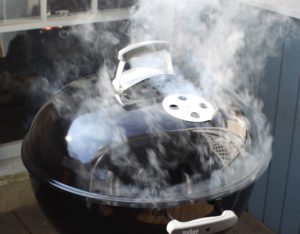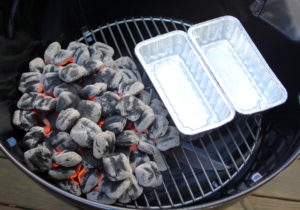 Smoking is an ancient food preservation technique prized now more for the flavors imparted by the smoke during the cooking process than the actual preservation of the food. Smoking with tea leaves is one of the earliest examples of historic tea cuisine. The iconic Tea Smoked Duck is still enjoyed today, often using the same classic techniques developed generations ago.
Smoking is an ancient food preservation technique prized now more for the flavors imparted by the smoke during the cooking process than the actual preservation of the food. Smoking with tea leaves is one of the earliest examples of historic tea cuisine. The iconic Tea Smoked Duck is still enjoyed today, often using the same classic techniques developed generations ago.
Sometimes, in fact, the smoke is used only for flavor transformation, such as in tea-smoked salt or cheese, or even smoked cocktails, and no cooking of the product is desired at all.
Smoking with tea leaves is not that different from classic wood chip smoking, and in fact tea leaves and wood chips work beautifully together. More often than not, blended in with the tea leaves, will be, if not wood chips, other aromatic flavor components such as spices, nut shells or zest as well as uncooked rice to moderate the burn-off of the leaves, and sugar to aid the smoke in penetrating and sticking to the item being smoked.
Larger leaf aromatic teas such as Keemun, Yunnan, Nilgiri, lychee, and jasmine, work very well for smoking and you will select the best tea as well as the other aromatics according to the food being smoked.
 There are a variety of approaches to smoking with tea leaves such as using a commercial smoker, an outdoor gas grill with or without a smoker box, an outdoor charcoal grill, an indoor stovetop wok, hotel pan or commercial ‘smoking pan’ or even a hand held smoker like the commercial ‘Smoking Gun’ or a vaporizer. For each of these techniques, other than the smoking gun which is used solely for the flavor and aromatics, you have the option of cooking the product in parallel with smoking it. The example we’re using with the ‘Smoking Gun’ is a smoked cocktail, which belies the usual smoking rule to pat dry your product well before smoking it as a dried product will smoke more evenly and effectively.
There are a variety of approaches to smoking with tea leaves such as using a commercial smoker, an outdoor gas grill with or without a smoker box, an outdoor charcoal grill, an indoor stovetop wok, hotel pan or commercial ‘smoking pan’ or even a hand held smoker like the commercial ‘Smoking Gun’ or a vaporizer. For each of these techniques, other than the smoking gun which is used solely for the flavor and aromatics, you have the option of cooking the product in parallel with smoking it. The example we’re using with the ‘Smoking Gun’ is a smoked cocktail, which belies the usual smoking rule to pat dry your product well before smoking it as a dried product will smoke more evenly and effectively.
Since the amount of time needed to cook most products through could potentially over-smoke the dish, it is common to combine smoking with additional cooking. In general, in Chinese cuisine, the items are cooked or partially cooked beforehand (steaming or boiling), while in Western smoking recipes it is often more common to finish cooking the item after the desired amount of smoking has been reached in an oven or on a grill. If of course the reverse is the case, and you want only a touch of smoke, you can add the smoking packet near the end, or remove it when the proper amount of smoking is achieved. Color can be your indicator here and when a beautiful burnished amber hue is achieved, feel free to remove the smoking packet and continue to cook/grill your item. Keep in mind with any smoking technique, when possible, place the product to be smoked away from the smoking packet or pile, and always leave adequate room between and around items to be smoked to allow proper air circulation and even smoking.
Click here to view the recipe: Smoking with Tea Leaves
Tea Market
Get More Value from Your Tea: BRU Maker One
+41794574278
Jacque's Organics
(647) 804-7263